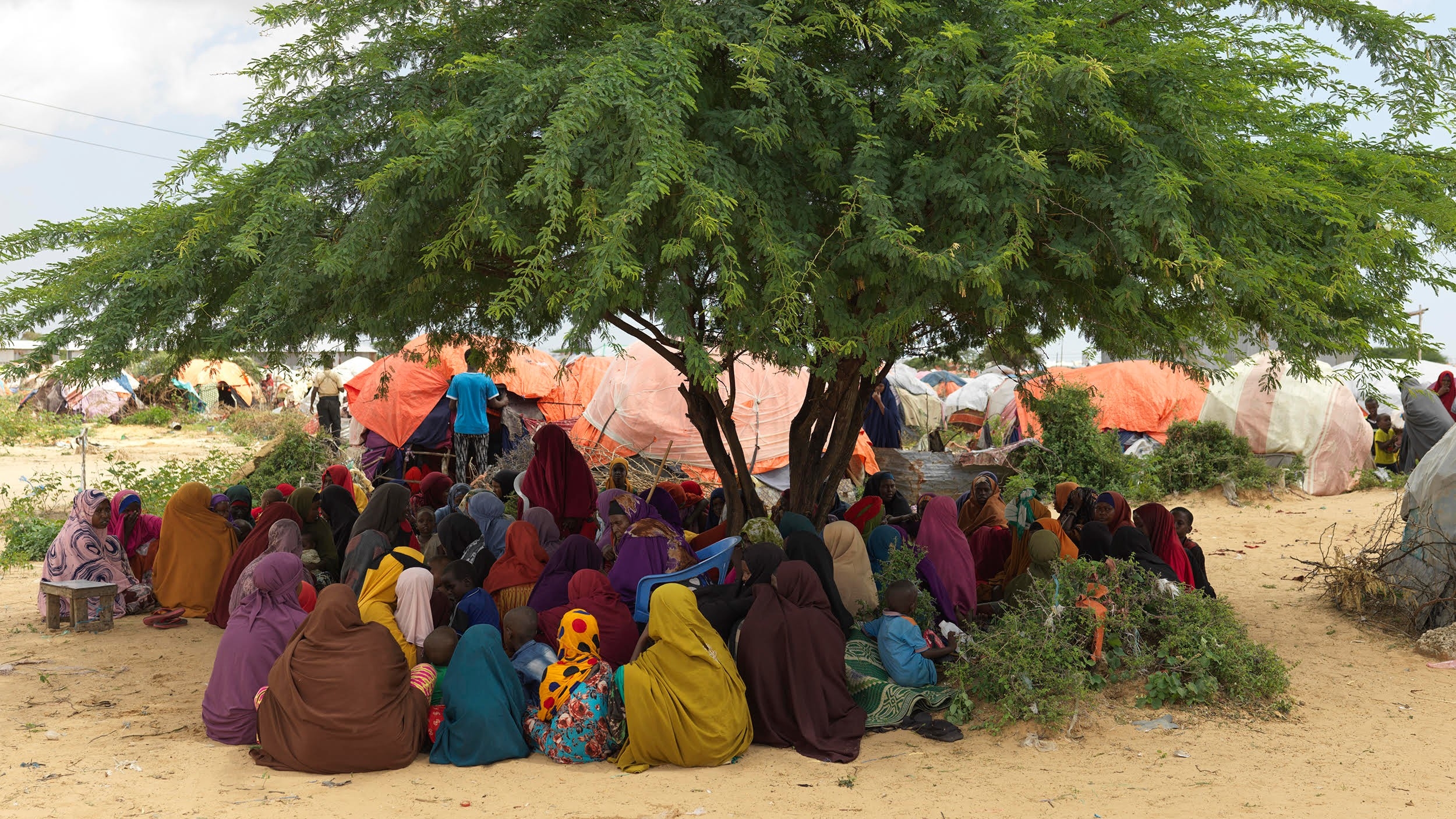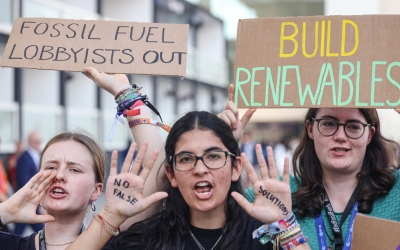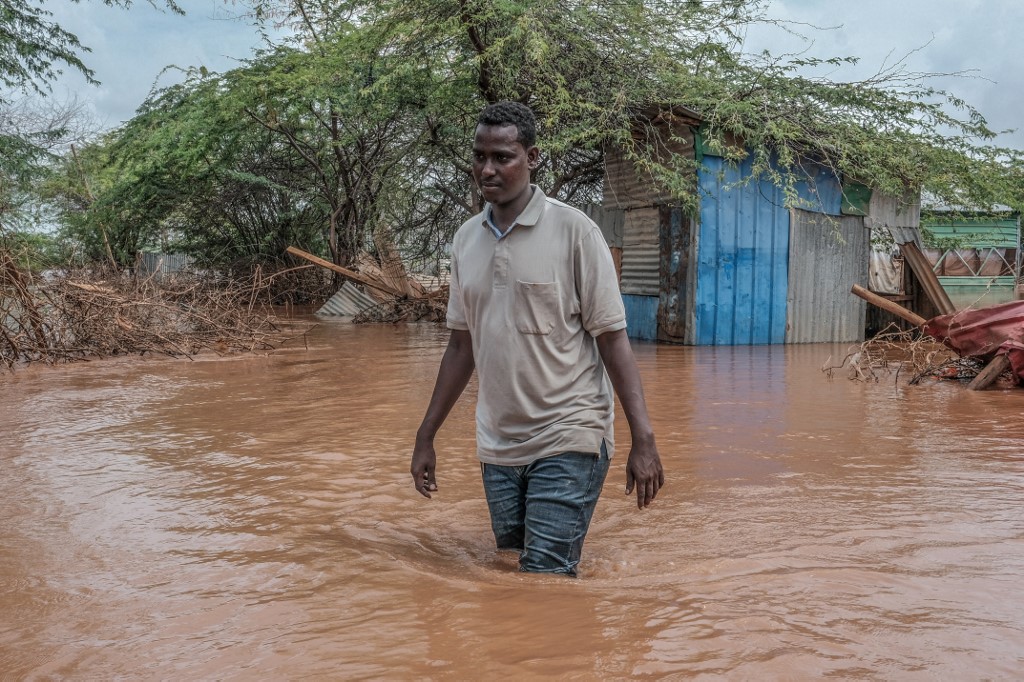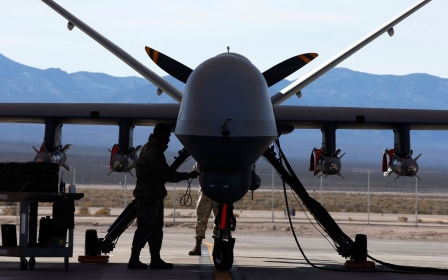From drought to floods: Deadly cocktail of war and climate change takes toll in Somalia

Extraordinary heat, wildfires and weather disasters.
Last year was marked by a series of catastrophic events, with climate change hurting some of the world's most vulnerable populations the hardest.
Glacier melt was unprecedented, with sea ice in the Antarctic shrinking to a record low - beating the previous figure by a million square kilometres.
Sea surface temperatures were hotter than ever before, while land temperatures didn't just break records, they shattered them - guaranteeing future global disasters.
In every corner of the developing world, from Pakistan to Syria and Libya to Brazil, the poorest bore the brunt of human-induced climate change despite having done the least to cause it.
New MEE newsletter: Jerusalem Dispatch
Sign up to get the latest insights and analysis on Israel-Palestine, alongside Turkey Unpacked and other MEE newsletters
One climate change calamity, however, despite brewing for years, went largely unreported.
Unprecedented floods followed the worst drought in Somalia's history, forcing almost one million people off their land.
Guarded by three Toyota trucks of armed, well-disciplined private security men - a necessity in an area threatened by al-Shabab, the Al-Qaeda-linked group which has fought a long war against the Somali government - we travelled to a camp for internally displaced people (IDPs) in the outskirts of the Somali capital of Mogadishu.
At the camp the devastation was evident to see.
The IDPs were farmers robbed of their livelihoods by a series of freak climate events over the past ten years - made worse by the country's grinding war.
The last decade has been a story of ever lengthening droughts and devastating floods which have made life unliveable in rebel and government controlled territory alike.
A record-breaking five failed rainy seasons, have plunged Somalia into severe drought, the worst in 40 years. Villagers told MEE that "nothing like this has ever happened before".
Four years of drought
This autumn the drought finally broke - only to be replaced by abnormally heavy rain which led to mass flooding instead.
More than two million Somalis have been impacted, with 746,000 driven from their homes and forced to seek refuge in makeshift camps.
There are over 2,400 displacement camps scattered across Somalia, overcrowded and lacking basic facilities, leaving inhabitants without access to food, water and healthcare.
In the emergency camp visited by MEE on the outskirts of Mogadishu, large families were crowded into tiny makeshift tents, often made of plastic, intensifying the already suffocating midday heat.
'The pressures of economic crisis and continuous internal displacement feeds perfectly into the dynamic of conflict and war'
- Edward Channer, Islamic Relief
The camp was so new that it didn’t have a name.
Janaay Noor Abdi, a 62-year-old grandmother from Bulo Warbo village told MEE how "for four years there was no rain and the river had dried up".
During this period, she recalled that conditions were so dire that "some people went mad".
"They were shocked. They had nothing to live on and were filled with anxiety about how to feed their families," Noor Abdi said.
Last autumn the rains finally came.
"I was so happy," Noor Abdi said, adding, "because our farm was ready to cultivate."
Her husband Osman planted the seeds for crops of maize, beans, sweet potatoes and other produce. They began to grow - and then the banks of the nearby Shabelle river broke with the floodwater washing away their crops, drowning their livestock, and destroying everything her family possessed.
She said that in desperation her family made the 25km journey from their village to Mogadishu barefoot, without anything to eat.
'The worst flooding we had ever seen'
In the camp, many lacked the basic necessities needed for life: clothes, mattresses and food.
Women are forced to seek wretchedly paid jobs washing clothes or working as porters in local markets.
Dahabo Isak Adam, 46, told MEE that she could earn 50,000 Somali shillings a day, the equivalent of about $1.50, by working as a ‘market lady’ transporting vegetables and fruits.
The cost of the journey from the camp is 12,000 shillings, so she could make little more than $1 a day.
Such work is hard - and often dangerous.
Sixty-six-year-old Nuuno Osman Mohamed slipped under the weight of her burden, breaking a leg and an arm, and is now dependent on the charity of other IDPs to survive.
All the people MEE spoke to concurred that something had changed over the last decade.
"The weather we knew has changed to a new weather. This year is drought. The next year is flooding," said 60-year-old Hussein Hassan, a veteran farmer in Balcad, a village 36km northeast of Mogadishu.
He recalled: "We were happy to see that the rains were coming back. But then the floods came and destroyed our homes and our crops."
MEE asked if anything similar had happened before: "No. This was the worst flooding we had ever seen," he said.
Climate change and war
Hussein, a father of 14, showed a deep wound in his left arm, caused by an al-Shabab bombing three years ago in his village north of Mogadishu.
Most said the freak weather was the will of God. Others blamed "air pollution". One theory held that weapons used in the current war had triggered novel weather patterns. Very few identified the real problem: growing use of fossil fuels by industrial countries.
I asked one farmer, 48-year-old Abdi Yosuf, what caused the change in the weather. He replied: "I don't know. All I know is there are more droughts coming in successive seasons and more rain than usual."
The immediate cause of the recent floods is El Nino, the term used to describe the periodic warming of sea surface temperature in the equatorial Pacific.
But the long-term reason for long-term drought and devastating floods is climate change, brought about by the release of immense amounts of carbon dioxide and other greenhouse gases into the atmosphere, resulting in soaring global temperatures. A tragic global unfairness lurks behind this.
Thanks to an ugly paradox, countries like Germany and the United Kingdom are far more likely to survive climate change. Yet these are the developed countries that are most responsible for the release of greenhouse gases into the atmosphere. Less developed countries suffer far more.
Somalia generates less than 0.03 percent of the world's greenhouse gas emissions but it is one of the world’s largest victims. One recent study placed Somalia alongside Chad and Syria as the three most climate-change- vulnerable countries in the world.
In all three of these countries war makes things much worse. There is indeed a terrifying symbiosis between climate change and war.
"The pressures of economic crisis and continuous internal displacement feeds perfectly into the dynamic of conflict and war," said Edward Channer, expert on conflict at Islamic Relief.
"If you have no land to farm on and no livestock, armed groups feed off the situation. In particular it creates a fertile recruiting ground.
"Climate change keeps armed groups stocked up with recruits of personnel. At the same time less available land inevitably leads to conflict over land which threads into clan conflict."
No more singing
Loss of land also drives desperate farmers ever deeper into the forests to cut down trees for charcoal, for which there is a ready market in the Gulf.
"This is dangerous," noted Channer, "because often other people regard the forest land as theirs. And in Somalia the charcoal industry is dominated by armed groups."
Displaced villagers told MEE how some desperate people amid the recent drought, attempting to feed their families, had turned to charcoal burning in the forests.
Several of them, however, had been killed by rival gangs of charcoal burners. The problem is only likely to get worse as the amount of land available for farming continues to fall.
Underneath the embracing canopy of a qurac tree, MEE met 49-year-old farmer Nur Iman Darod, a respected elder from the 1600-strong village of Farbarato and father of 11 children, spoke of how war had brought horror to his village.
Now in exile from his ancestral home in the Gargar One IDP camp, Darod cast his mind back to his first marriage twenty years ago in order to highlight the brutal contrast with conditions he lives in today.
'Al-Shabab attack and kill everybody. They fight against humanity... They give nothing: no life, no health centre, no education'
- Nur Iman Darod, farmer
"We celebrated for four days. We invited the entire village. We served as much meat and rice as anyone could want. We danced and sang songs," he recalled.
"Those were the best times. I was born in that village. I was a member of the community and devoted myself to my farm."
Darod, along with his two wives and 11 children, was driven out of his ancestral home by two apocalyptic horrors.
An al-Shabab attack forced Darod to abandon his home two years ago, taking just two hours to seize control of the village. All but 300 of the people who had lived there were driven out.
"Al-Shabab attack and kill everybody. They fight against humanity," said Darod.
"They give nothing: no life, no health centre, no education. They extort taxes on our crops. Since al-Shabab arrived, we can't come together and sing and celebrate."
Darod had worked for the previous civil administration but said he could not return "until there is full government control."
The second apocalyptic horror, just as brutal as al-Shabab but even more difficult and treacherous to combat, was the weather.
"We used to live our lives in accordance with the seasons," recalled Darod. "There were two times of year for planting. Gu (the spring) and Deyr (winter)."
During most years, villagers could rely on these two annual rainy seasons. No longer.
'Climate change follows you everywhere'
Since President Hassan Sheikh Mohamud returned to office in May 2022, the Somali military has claimed a series of military successes against Al-Shabab as the rebel leadership has fractured.
At the same there are signs of economic revival.
Though the situation in the rural areas is dire, the capital Mogadishu - once under al-Shabab control - is today a boom town, with property prices surging.
Last month the country passed a milestone in addressing its structural indebtedness problem. World Bank economic forecasts (caution needed because they were issued before the recent floods) indicate resilience.
These security and economic successes provide a platform that can enable its farmers to mitigate the effects - especially in the wake of last month's meeting of Cop28 in the United Arab Emirates.
Although the much-touted climate change summit is generally seen as a failure, the communique contained the first reference to Locally Led Adaptation (LLA) - enabling traditional knowledge and local experience to shape the response to climate change.
The farmers and pastoralists from local communities in countries such Somalia bear the brunt of climate change. LLA is based on the idea that they know best how to survive. At last months conference, for the first time in 28 years, the idea finally came to fruition.
'In Somalia, a history of navigating climate impacts in isolation has resulted in forced relocations, asset liquidation, and a distressing descent into poverty'
- Jamie Williams, climate change expert
"In Somalia, a history of navigating climate impacts in isolation has resulted in forced relocations, asset liquidation, and a distressing descent into poverty," said Jamie Williams, a climate change expert at Islamic Relief.
"Localised adaptation not only breaks this cycle but also grants communities the agency, championed by the Somali government, to actively participate in the implementation and vigilant monitoring of effective climate adaptation strategies.
"This paradigm shift heralds a brighter, more inclusive future for climate resilience on both local and global scales."
Local people have the most thorough knowledge of how irrigation systems, barrages, sea walls, flood defences, and bridges can defend their community.
I asked Mohammad Osman, a 28-year-old farmer wearing an Atletico Madrid T-shirt, which was worse: climate change or al-Shabab. He told me that "al-Shabab is worse because they are killing you”.
Darod agreed. "Al-Shabab is the worst. If you have peace you can adapt to climate change," he said.
Others take a different view, saying: "You can flee from al-Shabab and live elsewhere, but climate change follows you everywhere."
Middle East Eye thanks Islamic Relief for facilitating Peter Oborne’s trip to Somalia.
Middle East Eye delivers independent and unrivalled coverage and analysis of the Middle East, North Africa and beyond. To learn more about republishing this content and the associated fees, please fill out this form. More about MEE can be found here.







